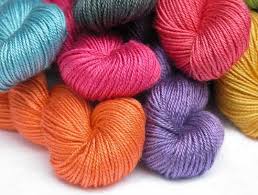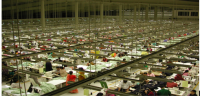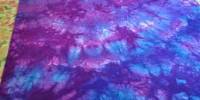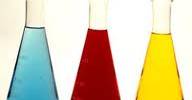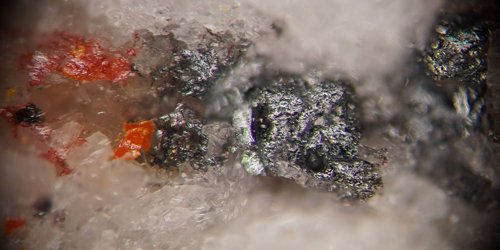Fabrics
Knitting is one of the ways of turning thread or yarn into clothes. Fabric completely consists of horizontal parallel courses (crosswise) or yarn. These courses are joined to each other by interlocking loops where a short loop of one course of the yarn is wrapped over the bight of another course.
Fabric is obtained either by hand Fabric process or then by machine. In hand knitting process, a base series of twisted loops of yarn are made on a knitting needle before starting the process. A second needle is then used to reach through each loop in succession to snag a bight of yarn and pull a length back through the loop. Fabric by machine use a different mechanical system producing nearly identical results.
Fabric composites show higher impact tolerance compared to the traditional composites or even to woven fabric composites. It is believed that the hand knitting originated among the nomads of the Arabian Peninsula about 1000 BC.
Type’s of fabrics:
Weft fabric-It is either made by hand or machine by looping together the lengths of the yearn. This supports the fabric to become stretchy and comfortable. Weft-knitted fabrics are used in socks. T-shirts an jumpers.
Warp knitted fabric- It is made by machine only. The loops, in this kind of fabrics interlock along the length of the fabric. It is only slightly stretchy and it do not ladders. These are used as swimwear, underwear etc.
Advantages of Fabric Wears:
Because of casual and soft in nature as well as inherent good properties such as hygienic properties, fashionable design and color, knit wears have become the popular wear all over the world. Knit wears are informal but fashionable usually with short sleeves. Knit wears are commonly made of knitted fabrics of single jersey, Ribs, Interlock, etc due to the specifications in raw materials by using lower count of yam, construction of fabrics and stitching. Knit wears possess certain properties which are essential for good apparels; some special advantages of fabric-wears are given below:
1) Fabric garment products are softer and more comfortable;
2) Fabric garments are usually used as underwear
Garments i.e. used for soft skin abrasion.
3) Usually lower count of yam is used for knitting fabrics.
So, Fabric has more socking capability.
4) More profitable production can be made due to lower
Project cost and cheaper management cost.
5) Fabric wears can be handled more easily while using
And washing. ,
6) Its market price is comparatively cheaper.
Manufacturing process:
For setting up Composite Industries consists of Fabric Dyeing Finishing unit and Garments unit. The product of one unit will be the raw material of other unit:
The sequential process from yam manufacture to Garments product may be described as follows!
For fabric Unit:
Fabric machine is various types where various design produces. Fabrics will also be produce in the circular –Fabric machines by altering some attachments mainly changing of camas.
Flat fabrics for collar and cuff will be ‘produced in the flat fabric machine. After the fabrics are produced, it is inspected in running condition while passing over a table of the inspection machine. The technology involved in Knitted fabrics is fairly simple which may be seen in the following flow process chart:
Process Flow Chart
Circular fabric
Face side inside turning of the fabrics
Fabric Dyeing and Finishing Unit:
The technology involved in dyeing finishing of Knitted fabrics may be seen as below;
- Face side inside
- Turing of the Knitted
- Fabrics
- Scouring /Bleaching
- Washing
- Bleached fabric (white)
- Dying
- Ballooning & Squeezing/Hydro
- Extractor
- Drying and heat setting stuttering
- Calendaring/Softening
- Compacting & Shrinkage Controlling
- Inspection
- Folding & baling
